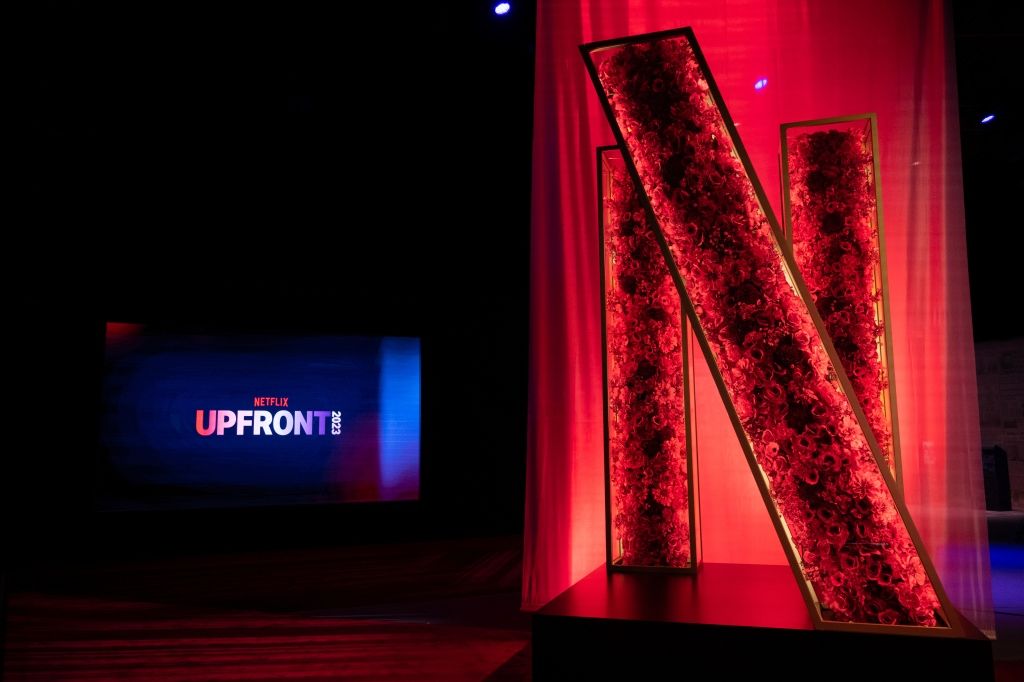Netflix Advertising Tier Hits 5M Global Users Six Months After Launch; Company Says One-Quarter Of New Subscribers Opt For Ads, With More Than 70% Aged 18 To 49 - Deadline
Six months after the landmark debut of its ad-supported subscription tier, Netflix said the plan has hit 5 million monthly active users globally.
The number, along with other stats, insights and product and programming announcements, were revealed during the company’s upfronts presentation to advertisers. The LA-shot, pre-recorded event was conducted virtually in part due to concerns about the WGA strike and uncertainties about talent. Co-CEO Greg Peters opened by acknowledging that the remote setup was a shift from a previously planned in-person gathering at the Paris Theatre in New York, though he did not mention the labor strife. “This is not exactly as we originally planned it,” he said, “but we live in a dynamic world and we have definitely found that being able to adjust to a new reality is very useful.”
The MAU figure differs from paid subscribers and can be calculated differently by different companies based on how they define what it means to be “active.” Although the MAU number is a fraction of Netflix’s global base of 232.5 million subscribers, the company said the number of paying customers on the $7-a-month ad plan has more than doubled since early in 2023.
More than a quarter of our signups now choose the ads plan in countries where it’s available. At launch, it was in 12 countries: Australia, Brazil, Canada, France, Germany, Italy, Japan, Korea, Mexico, Spain, the UK and the U.S. Seventy percent of our ad-supported members are between the ages of 18 and 49 and the median age of ad-supported subscribers is 34.
“The signals are promising: engagement on our ads plan is similar to our comparable non-ads plans,” Co-CEO Greg Peters said. “That’s critical because it all starts and ends with consumers.” The exec added that there is “plenty of runway ahead of us,” citing the stat that Netflix accounts for 10% of overall TV usage even in its most-penetrated territories.
Co-CEO Ted Sarandos said the company’s scale makes the ad effort viable. “Our shows and movies are generating audiences that are generating global audiences that are many times bigger than our closest competitors’,” he said. Sarandos also offered context for the company’s longstanding resistance to allowing ads. “For years, we were trying to keep our business as simple as possible, so that we could grow as fast as possible,” he said. “But we have actually realized that we left a big segment off the table.”
Innovations on the order of the House of Cards binge-release earthquake will help carry the day eventually on Netflix, even if they take several years to pull off, Sarandos added. He harkened back to his days in the home entertainment business, noting the VHS release of Top Gun in the 1986, which featured an integrated Diet Pepsi ad. “That had never been done before, and the ad kicked ass!” Sarandos raved. “It was like an extension of the movie, and people loved it.” Before long, similar brand campaigns were woven into releases like Jurassic Park and branded content was on its way. “What was previously thought to be the most premium real estate in entertainment,” he said, became a sandbox for creative advertising. “We’re going to bring that same level of creativity to ads on Netflix.”
Because of the trove of data Netflix has, Sarandos theorized, a 30-minute commercial could be created, playing out over several days in short bursts as viewers start and stop viewing. “You can’t do that on linear TV because people don’t live on one channel. Now, this isn’t going to happen next week, maybe not even next year. And it’s just one idea. We can’t wait to explore your other ideas and opportunities.”
The upfront event marked a milestone for Netflix about six months after it lit up a $7-a-month ad-supported subscription plan after insisting for years it would never accept advertising. After teaming up with Microsoft on the hastily announced effort, the company quickly scaled an ad team led by Jeremi Gorman, a veteran of Snap Inc. and Amazon. Another seasoned exec joining the fold is Peter Naylor, who led ad sales at Hulu, whose traction in streaming ads was cited by Netflix co-founder Reed Hastings as an inspiration for getting in the game.
Wall Street analysts have projected that the introduction of advertising could bring in billions in new revenue for Netflix as it maneuvers through a period when it has topped out in subscribers in North America. Netflix remains the top streaming operation by a fairly wide margin, but it faces intensifying competition both at home and around the world. Disney introduced an ad-supported version of its flagship Disney+ service last December. The most recent quarterly reports from Disney and Netflix revealed little in terms of early gains in advertising, though execs maintained they remain bullish on the opportunity.
Gorman told buyers during her part of the presentation that she felt she had earned a “promotion” from Netflix superfan to global head of advertising when she joined the company last year. Just six months passed between the initial announcement about the plan to stream ads and the launch of the ad-backed tier, she said, and only six more months since launch. “It’s been alittle busy around here,” she said. “But we’ve been incredibly thoughtful about how we engage members with our ads experience.”
Source: Deadline


